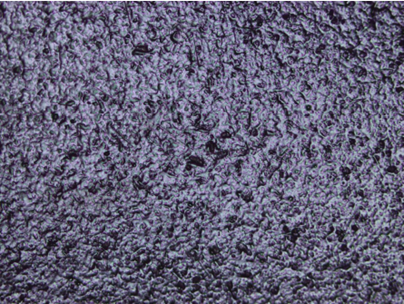Thermal Efficiency Development of Solar Selective Absorber Surface for Hot Air in Solar Drying
Keywords:
Aluminum Can, Solar Selective Absorber Surface, Solar Absorptance, Thermal EfficiencyAbstract
Solar selective absorbers are the most using in solar water heaters and heat source to producing hot air for drying. Normally, it was produced by chemical method with complex process. Also, developing the solar selective absorber surface without the complex process for application use will be important. This work focuses on design the solar selective absorber surface for producing hot air in solar drying by using materials residue from coffee can aluminum. Combine coating with spray method for increasing efficiency absorption by Ni-Al powder. The result of coating sprayed by the BOSANY Hi-Temp Spray paint (Black) code 1039 had wavelength in the range 300-2,500 nm affect to highest absorptance efficiency was of 0.98. With comparing solar density has low reflection (R = 0) and high solar absorptance (α = 1) as value theory. the solar density has air mass was 1.5 AM, it has value near solar density. The selective absorber surface characteristic has black surface similar to the sugar crystals or the uniform height of the mountains affected to the anti-reflection. Addition, the coating is able to be used in special thermal applications by maintaining the thermal conductivity of materials over the operational temperature range (50–650 °C). due to thermal efficiency of 0.81 and heat extraction factor coefficient or heat loss (-FRUL) of -18.38 W/m2•oC. It can application for producing hot air in solar drying, which is low cost and high thermal efficiency.
References
Ning, Y., Wang, C., Wang, W., Tomasella, E., Sun, Y., Song, P., Hao, W., & Bousquet, A. (2020). Improvement of thermal stability of ZrSiON based solar selective absorbing coating. Journal of Materiomics, 6(4), 760-767.
Menezes, V. L., Gomes, K. C., & Carvalho, M. (2022). Evaluation of the manufacturing processes for solar selective surfaces based on CrxOy from a carbon footprint perspective. Cleaner Materials, 3, 100035.
Granqvist, C. G. (1st Edition). (2004). Encyclopedia of Energy. Colorado, USA: Elsevier Inc.
Xu, K., Du, M., Hao, L., Mi, J., Yu, Q., & Li., S. (2020). A review of high-temperature selective absorbing coatings for solar thermal applications. Journal of Materiomics, 6(1), 167-182.
Liu, H., Xie, M., Ai, Q., & Yu., Z. (2021). Ultra-broadband selective absorber for near-perfect harvesting of solar energy. Journal of Quantitative Spectroscopy and Radiative Transfer, 266, 107575. from https://doi.org/10.1016/j.jqsrt.2021.107575
Nunesa, R. A. X., Costa, V. C., Sade, W., Araújo, F. R., & Silva., G. M. (2018). Selective Surfaces of Black Chromium for Use in Solar Absorbers. Materials Research, 21(1). from http://dx.doi.org/10.1590/1980-5373-MR-2017-0556
Abed, R. N., Abed, A. R. N., & Yousif., E. (2021). Carbon Surfaces Doped with (Co3O4-Cr2O3) Nanocomposite for HighTemperature Photo Thermal Solar Energy Conversion Via Spectrally Selective Surfaces. Prog. Color Colorants Coat, 14(2021), 301-315.
Azonetwork. (2002). Aluminum - Advantages and Properties of Aluminum. Retrieved December 14, 2022, from https://www.azom.com/article.aspx?ArticleID=1446
Zhou, Q., Hu, Q., Wang, B., Zhou, B., Chen, P., & Liu., R. (2020). Fabrication and characterization of the Ni–Al energetic structural material with high energy density and mechanical properties. Journal of Alloys and Compounds, 832, 154894.
Medeiros, I. D. M., Gomes, K. C., Gonçalves, R. P. N., & Galvão., G. O. (2019). Selective Solar Surface Solar Based on Black Chromium: Influence of Electrodeposition Parameters in the Absorption of Surfaces. Materials Research. 22(2), e20180625. from http://dx.doi.org/10.1590/1980-5373-MR-2018-0625
Cui, X., Ruan, Q., Zhua, X., Xiz, X., Hu, J., Fu, R., Li, Y., Wang, J., & Xu., H. (2023). Photo thermal Nanomaterials: A Powerful Light-to-Heat Converter. Chem. Rev. 123(11), 6891-6952. from https://pubs.acs.org/doi/epdf/10.1021/acs.chemrev.3c00159
Gebretinsae, H. G., Tsegay, M. G., Welegergs, G. G., Maaza, M., & Nuru., Z. Y. (2022). Effect of Rotational Speed on the Structural, Morphological, and Optical Properties of Biosynthesized Nickel Oxide Thin Films for Selective Solar Absorber Nanocoatings. Energies, 15(23), 8960. from https://doi.org/10.3390/en15238960

Downloads
Published
How to Cite
Issue
Section
License
Copyright (c) 2023 School of Renewable Energy and Smart Grid Technology (SGtech)

This work is licensed under a Creative Commons Attribution-NonCommercial-NoDerivatives 4.0 International License.
All copyrights of the above manuscript, including rights to publish in any media, are transferred to the SGtech.
The authors retain the following rights;
1. All proprietary rights other than copyright.
2. Re-use of all or part of the above manuscript in their work.
3. Reproduction of the above manuscript for author’s personal use or for company/institution use provided that
(a) prior permission of SGtech is obtained,
(b) the source and SGtech copyright notice are indicated, and
(c) the copies are not offered for sale.








